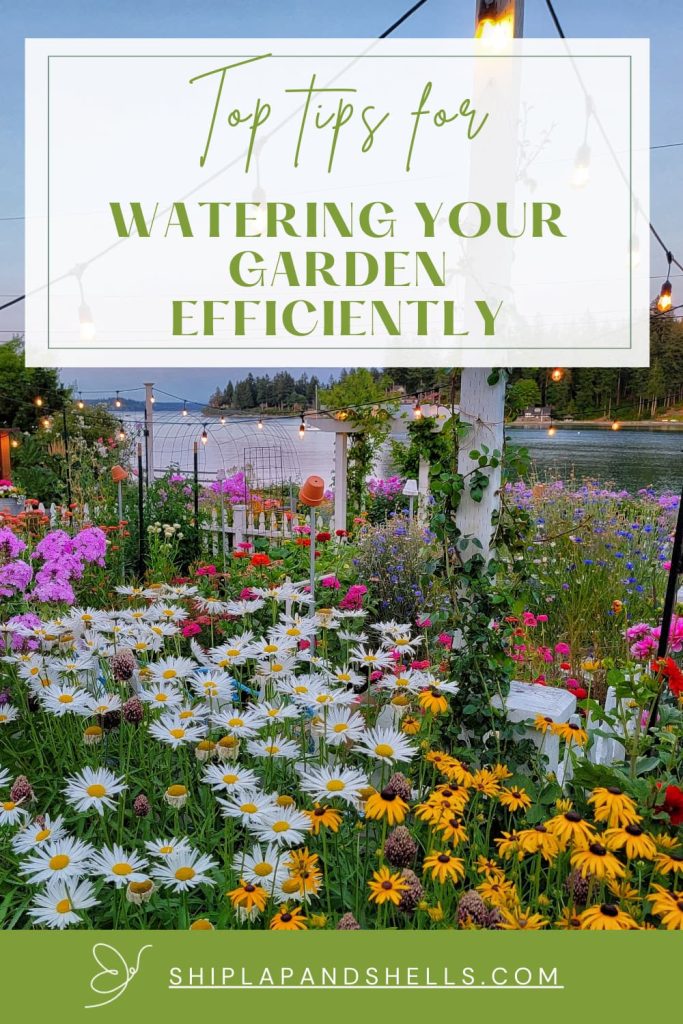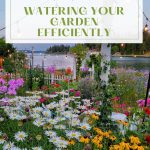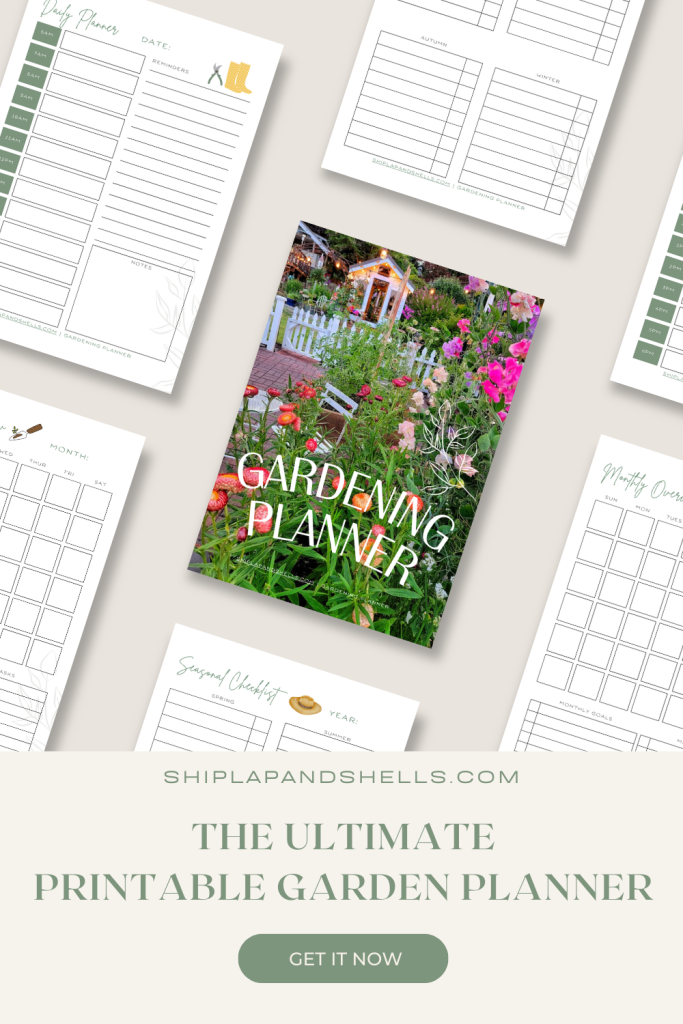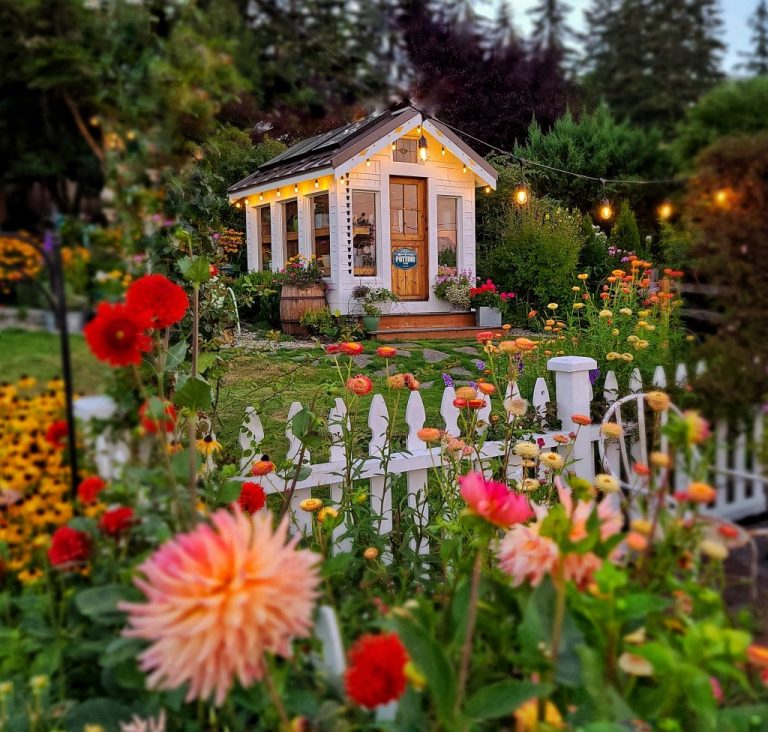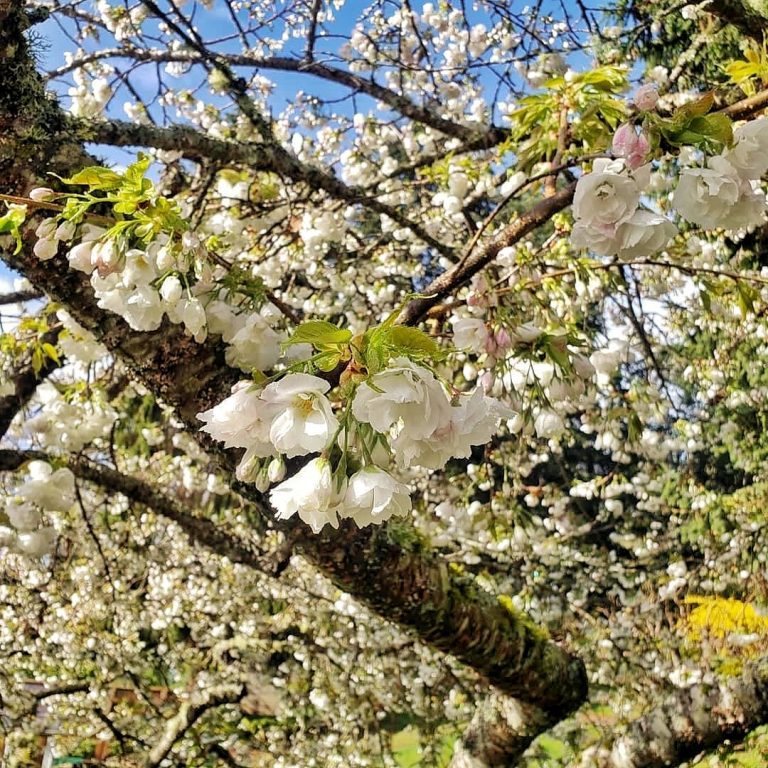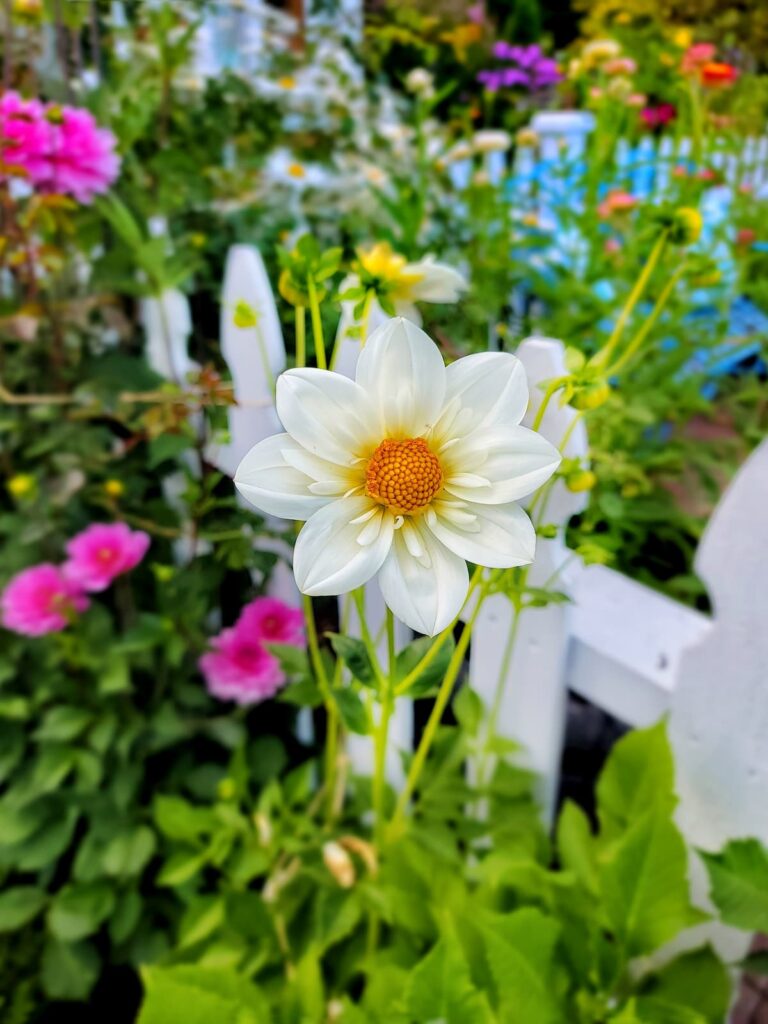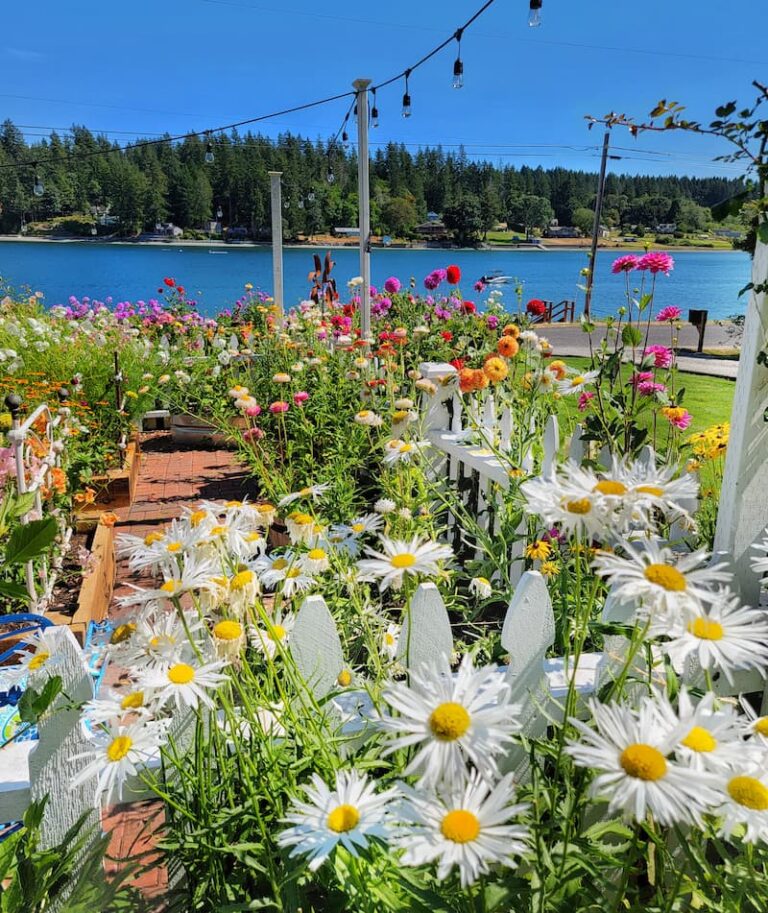Top Tips for Watering Your Flower Garden Efficiently
Watering your flower garden might seem like a no-brainer, but there’s a bit more to it than just turning on the hose and walking away. Knowing when, how much, and how to water can make all the difference in keeping your garden thriving through the season, especially during those dry summer spells.
When I first started gardening, I figured if the plants looked wet, they were fine. Spoiler alert: they weren’t. Some wilted from too little water at the roots, others struggled with soggy soil. It took a bit of trial and error, but once I learned a few simple strategies, everything changed.
In this post, I’m sharing the top tips that have helped me water smarter, not harder, while keeping my flower garden blooming beautifully. Whether you’re caring for containers, garden beds, or a full-cutting garden, these tips will help you save time, water, and keep your plants happy.
Grab your favorite watering can (or garden hose!)—let’s dig in.
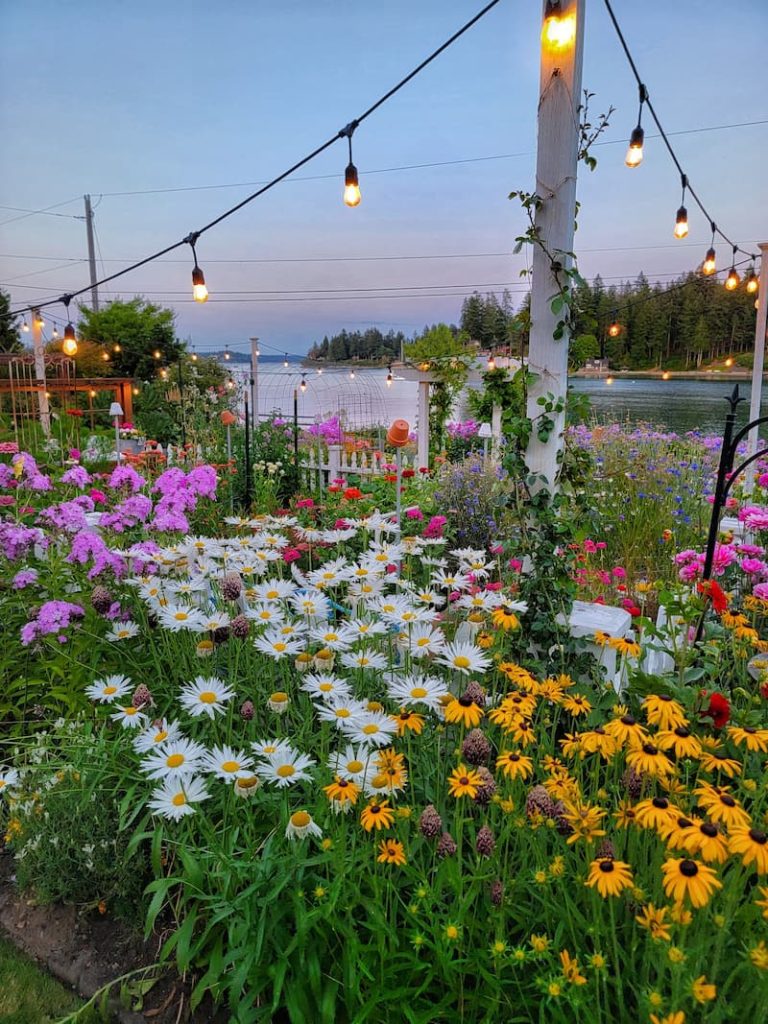
As an Amazon affiliate, I earn a commission from qualifying purchases at no additional cost to you. My blog also includes other affiliate links for your convenience. Click here to read my privacy policy.
What Is Water-Efficient Gardening?

Water-efficient gardening is all about giving your plants what they need without overdoing it. It means being smart with your watering routine, so your garden thrives while wasting less water along the way.
By using techniques like deep watering, you encourage roots to grow farther down into the soil, which helps plants become more drought-tolerant. Adding a layer of mulch? That’s a game-changer, too. It keeps moisture in the soil longer and cuts down on evaporation.
Other water-wise tips include planting drought-tolerant varieties, using drip irrigation systems, and watering early in the morning or later in the evening when the sun won’t steal it all away.
With just a few mindful practices, you can create a beautiful, sustainable garden that stands strong through dry spells and helps you conserve water at the same time. It’s a win-win!
How Much Water Does My Garden Need?
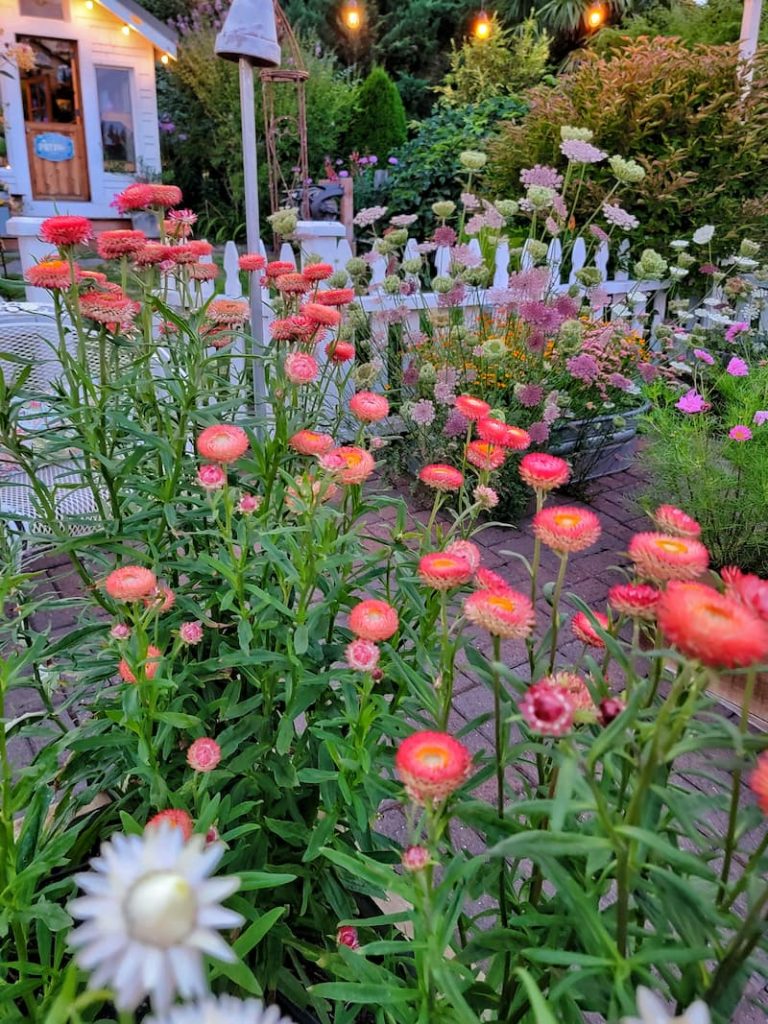
Figuring out how much water your garden really needs can feel like a bit of a guessing game, but it doesn’t have to be.
As a general rule, most gardens do well with about 1 to 2 inches of water each week, whether that comes from rain or your hose. But that number isn’t set in stone. The type of soil you have plays a big role. Sandy soil drains quickly and often needs more frequent watering, while clay soil holds onto moisture longer and doesn’t need as much.
The plants you’re growing matter, too. Vegetables and thirsty annuals tend to need more water, especially when they’re just getting established. On the other hand, perennials and native plants are usually better at handling dry spells once they’ve settled in.
Don’t forget to factor in the weather. Hot, dry, or windy days can dry out soil fast, so you might need to water more often during those stretches.
The best way to know what your garden needs? Keep an eye on the soil. Stick your finger an inch or two down—if it feels dry, it’s probably time to water. With a little observation and adjustment, you’ll find the right rhythm to keep your garden happy and hydrated.
Moisture Needs of Specific Plants
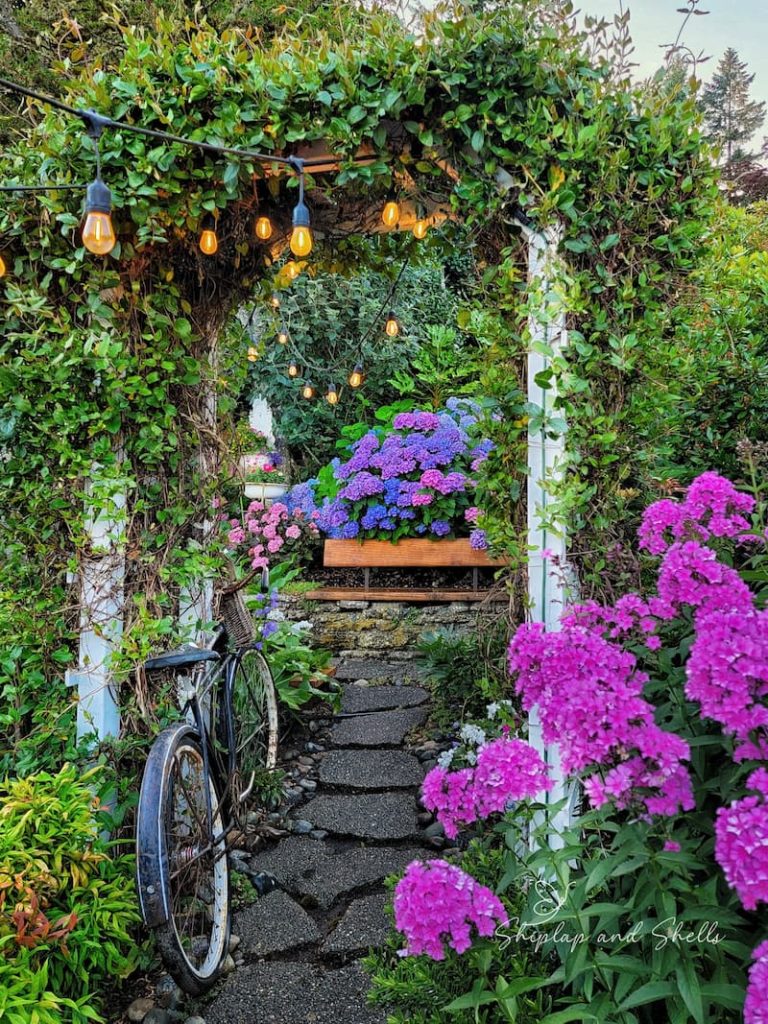
When it comes to watering your garden, a one-size-fits-all approach doesn’t always work. Different plants have different needs, and getting familiar with those can make your watering routine a whole lot more efficient.
Vegetables, for example, usually need more water, especially while they’re growing and producing. Leafy greens and root crops love steady, consistent moisture, while fruiting veggies like tomatoes and peppers may need a bit more attention during their peak production times.
Flowering plants vary quite a bit. Most annuals need regular watering to keep those blooms coming, but many perennials become more drought-tolerant once their roots are well established.
If you’re looking for low-maintenance options, consider drought-tolerant plants like succulents, lavender, or ornamental grasses. They’ve adapted to handle drier conditions and can do well with less frequent watering.
On the flip side, plants like hydrangeas, astilbes, and ferns are happiest in consistently moist soil. They’ll wilt quickly if they dry out too much, so keeping an eye on their moisture levels is key.
Knowing what your plants need helps you avoid overwatering the tough ones or underwatering the delicate ones, keeping your whole garden balanced and thriving.
Moisture Needs of Different Soil Types

Not all soil is created equal, and that makes a big difference when it comes to watering your garden. Understanding your soil type helps you know how often and how deeply to water, so your plants get what they need without overdoing it.
Here’s a simple breakdown of the most common soil types and how to care for them:
Sandy Soil
Sandy soil has large particles that drain water quickly, sometimes too quickly. That means your plants might need more frequent watering to stay hydrated.
Not sure if you have sandy soil? Grab a handful of moist soil and rub it between your fingers. If it feels gritty and crumbles easily, chances are it’s sandy.
To help it hold onto moisture longer, mix in plenty of organic matter like compost or mulch. This not only helps retain water but also improves nutrient content.
Clay Soil
Clay soil is the opposite—it holds onto water because its particles are small and tightly packed. That means you can water less often, but you’ll need to make sure the water soaks in deeply enough to reach the roots.
To test for clay, squeeze a handful of moist soil. If it forms a dense, sticky ball that stays together, you’ve got clay.
It’s a good idea to amend clay soil with compost or other organic materials to improve drainage and keep it from getting compacted.
Loamy Soil
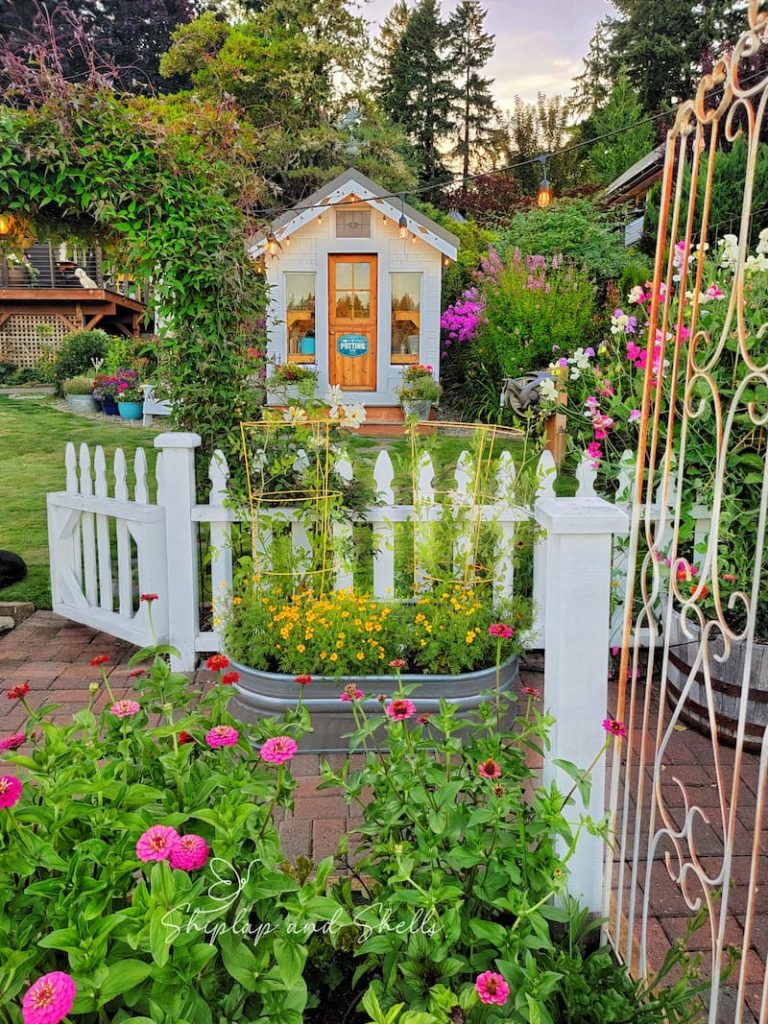
Loamy soil is often considered the gold standard for gardening, and for good reason! It’s a well-balanced mix of sand, silt, and clay, which means it holds moisture just enough without becoming soggy and still drains well. Most plants thrive in this kind of soil.
To identify loamy soil, grab a moist handful. It should feel slightly gritty and crumbly, but also smooth. It holds together when squeezed but falls apart easily with a little pressure.
If your garden is blessed with loam, you’re in great shape. Just remember to add compost regularly to keep the soil structure balanced and full of nutrients.
Silty Soil
Silty soil feels soft and almost silky to the touch, kind of like flour when it’s damp. It holds more moisture than sandy soil but drains better than heavy clay.
If you squeeze a handful and it forms a ball that easily crumbles apart, you’ve likely got silty soil. It’s a good growing medium, but it can get compacted over time, which can limit airflow and slow down drainage.
Mixing in organic matter, like compost or aged manure, helps improve the structure, prevent compaction, and support healthy root development.
How to Determine Your Soil Type
Moisten a small amount of soil and rub it between your fingers to assess its texture.
You can also conduct a jar test: place a soil sample in a jar with water, shake it well, and let it settle. The soil will separate into layers, with sand at the bottom, silt in the middle, and clay on top.
Check the Weather Forecast
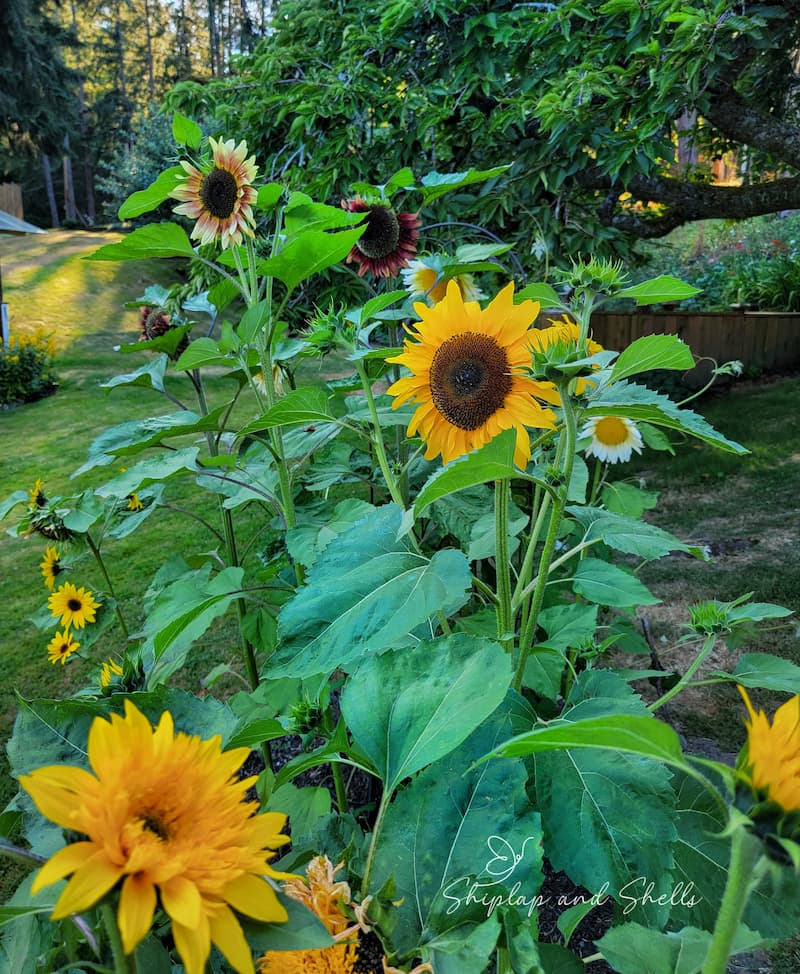
One of the easiest ways to water your garden more efficiently? Check the weather!
Rain is nature’s way of helping out, and if it’s in the forecast, you might be able to take a break from watering altogether. Before you grab the hose or turn on your sprinklers, take a quick peek at what the week ahead looks like. If rain is on the way, let it do the work for you.
Timing your watering around the weather not only helps you avoid overwatering (which can lead to soggy soil and stressed-out plants), but it also conserves water, something that’s especially important during dry spells.
A little planning goes a long way, and your plants (and your water bill) will thank you for it!
Different Ways to Efficiently Water Your Garden
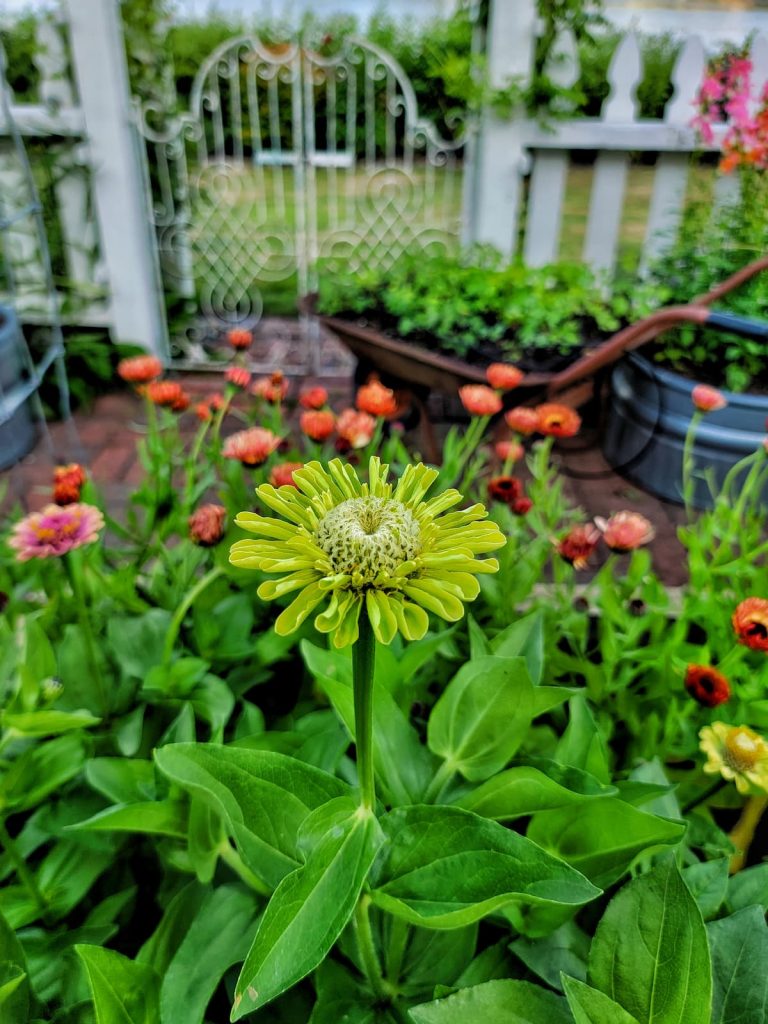
When it comes to keeping your garden hydrated, how you water can be just as important as how much. Choosing the right method can help you save water, time, and effort, while making sure your plants get exactly what they need.
Here are three popular watering options to consider, each with its own perks depending on your garden size, setup, and schedule.
Hand Watering
Sometimes, the classic way is still the best, especially for small spaces or tender new plants. Hand watering with a watering can or a hose and spray nozzle gives you full control. You can target the base of each plant, avoid wasting water on paths or mulch, and give a little extra love to those that need it most.
This method is perfect for container gardens, raised beds, or new transplants that benefit from gentle watering. And let’s be honest, there’s something peaceful about slowing down and watering your garden by hand.
The downside? It can take a while if you have a bigger space to cover. But if you enjoy being out in the garden and don’t mind a bit of time with the hose, it’s a simple and satisfying way to care for your plants.
Drip Irrigation or Soaker Hoses
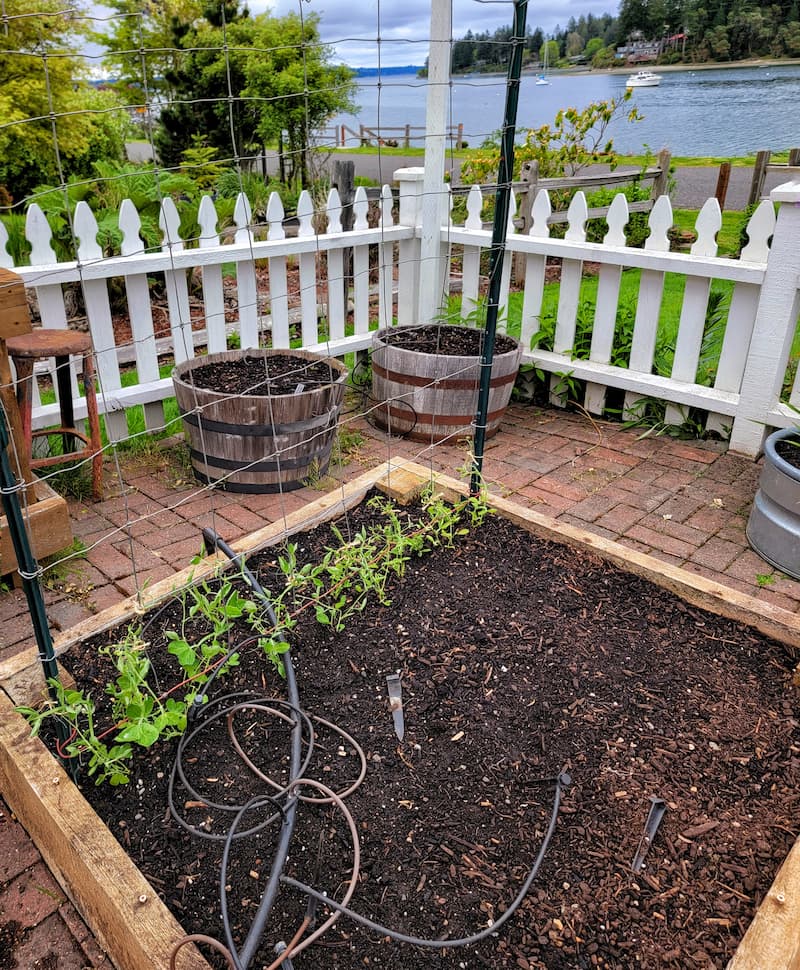
If you’re looking for a super-efficient way to water your garden, drip irrigation systems and soaker hoses are hard to beat. These methods deliver water slowly and directly to the base of your plants, right where they need it, helping to reduce evaporation and runoff.
Drip systems use a network of tubes and tiny emitters, while soaker hoses are porous and gently release water along their entire length. Both allow for deep watering, which encourages strong root growth and keeps your soil evenly moist.
They’re especially great for vegetable gardens, flower beds, or mixed plantings where different plants might have different needs. And if you set them up with a timer, you can take the guesswork out of your watering routine altogether.
It does take a little effort upfront to get things installed, but the long-term payoff, less water waste and healthier plants, makes it well worth it.
Traditional Sprinkler/Hose-End Sprinkler
Traditional sprinklers are a convenient option for lawns and larger garden areas, especially when you need to cover a lot of ground quickly. They provide broad, even coverage, but they’re not always the most water-wise choice.
Since the water is sprayed into the air, some of it can evaporate before it even hits the ground, especially if you’re watering in the heat of the day. Wind can carry it off-course, and runoff can occur if the soil can’t absorb it fast enough.
To use sprinklers more efficiently, water early in the morning or in the early evening when temperatures are cooler and the sun won’t cause as much evaporation. Also, make sure the spray isn’t hitting sidewalks or driveways (we’ve all been there!).
Sprinklers are easy to use and get the job done, especially for larger spaces, just be mindful of how and when you’re using them to get the most benefit without wasting water.
4 Tips for Watering Your Garden Efficiently
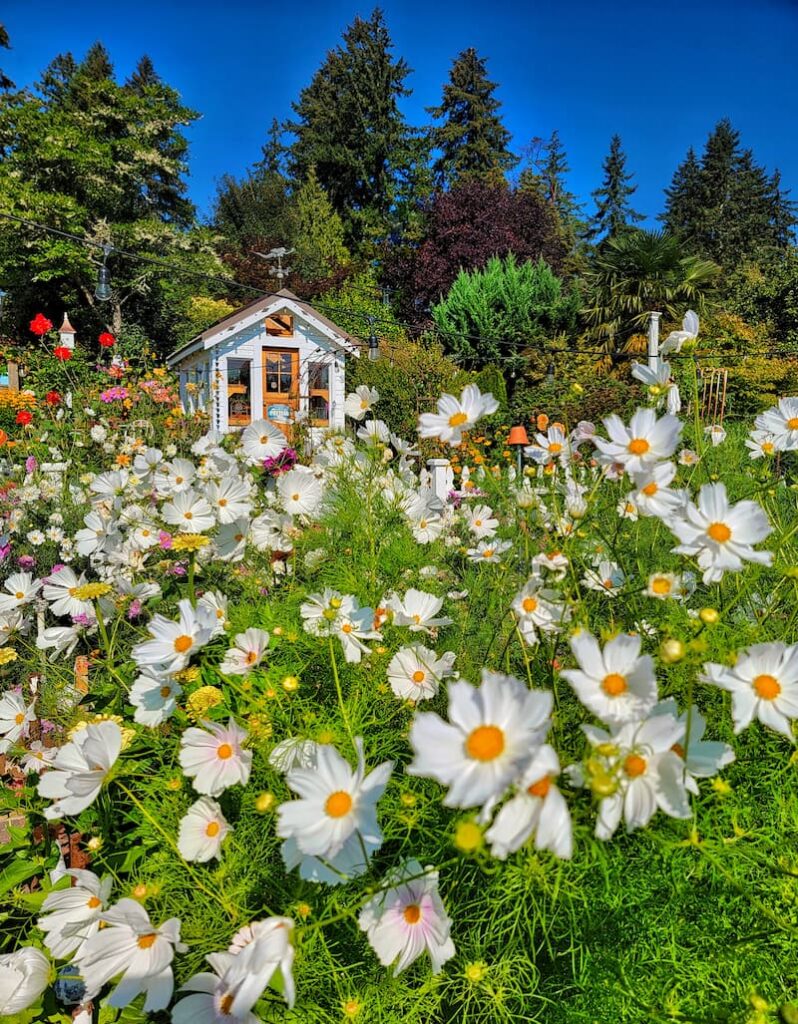
Watering your garden well isn’t just about using the right tools. It’s also about developing smart habits that help your plants thrive without wasting water. A few small adjustments can go a long way in keeping your garden healthy and your water usage in check.
Here are some of my favorite water-wise tips that really make a difference:
Check Moisture Levels First
Before you reach for the hose, take a moment to check your soil. Too much water can do just as much harm as too little—it can lead to soggy roots, mold, and unhappy plants.
You can use a simple soil moisture meter, or just do the good old-fashioned finger test: stick your finger into the soil about an inch deep. If it still feels moist, it’s okay to wait a bit longer before watering again.
This one quick step can save water and help your plants grow stronger by not overwhelming them with too much moisture.
Target the Roots
When you water, aim for the base of the plant, not the leaves. The roots are where all the action happens—it’s how your plants take in water and nutrients.
Wet leaves can actually cause problems, like fungal diseases, and you’ll end up wasting water that never makes it to the roots.
Tools like watering cans with long spouts, soaker hoses, or drip systems make it easy to water right where it counts. Focusing on the root zone helps your plants grow stronger and healthier with every drink.
Water Deeply, Not Daily
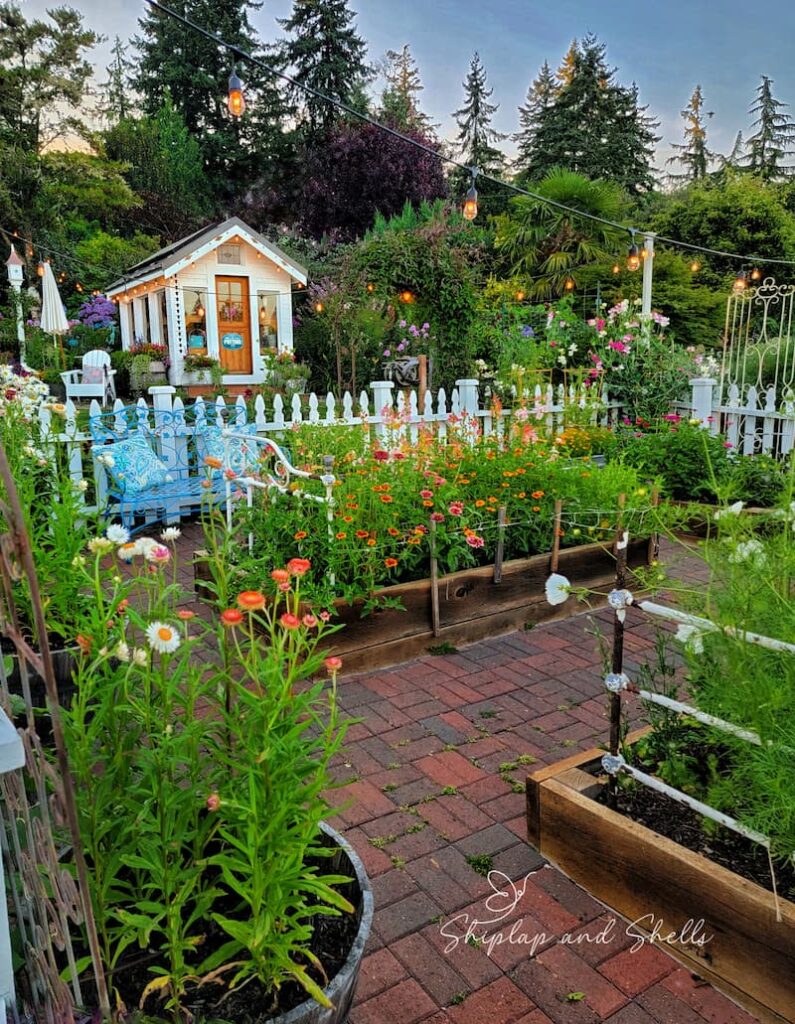
One of the best things you can do for your garden is to water deeply but less often. A quick daily sprinkle might seem helpful, but it usually just wets the surface, leaving roots thirsty and shallow.
Instead, give your plants a good, deep soak so the moisture reaches several inches down into the soil. Then, let the top layer dry out before watering again. This encourages stronger, deeper root growth, making your plants more resilient during hot or dry weather, and it’s better for water conservation too.
Watch for Signs of Overwatering
Too much water can be just as tough on plants as not enough. Signs like yellowing leaves, wilting even when the soil is wet, or mold and fungus around the base of your plants are all red flags.
If you notice these symptoms, it might be time to cut back. Letting the soil dry out between waterings and making sure your garden has good drainage can help prevent these problems.
Your plants will tell you what they need—you just have to know how to listen.
Best Way to Water Raised Beds & Containers Efficiently
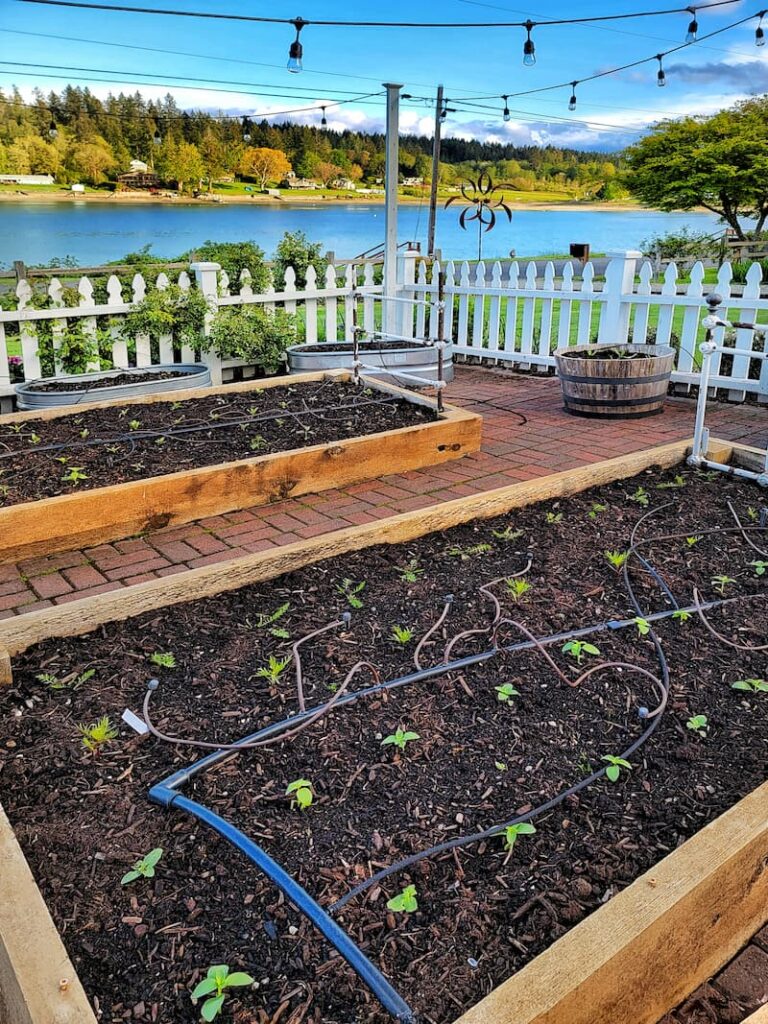
Raised beds and container gardens have so many benefits—great soil, better drainage, and easier access—but they do tend to dry out faster than in-ground beds. The good news? With a few smart strategies, you can keep your plants happy and hydrated without wasting water.
Watering Raised Beds
Thanks to their loose, well-draining soil, raised beds are great for plant health, but that also means they need more frequent watering, especially in warm or windy weather.
To make things easier (and more efficient), try using a soaker hose or drip line. These options let you water right at the root level where plants need it most, all while minimizing evaporation. You can even set them up on a timer so you’re not out there every morning with the hose.
Adding a layer of mulch, like straw, shredded leaves, or wood chips, can help a lot too. Mulch keeps the soil cooler and slows down moisture loss, so you won’t need to water as often.
Just be sure to check the soil regularly, especially during hot spells. Stick your finger a couple inches down into the soil to see if it’s still damp. Your plants will thank you for the extra attention!
Watering Container Plants
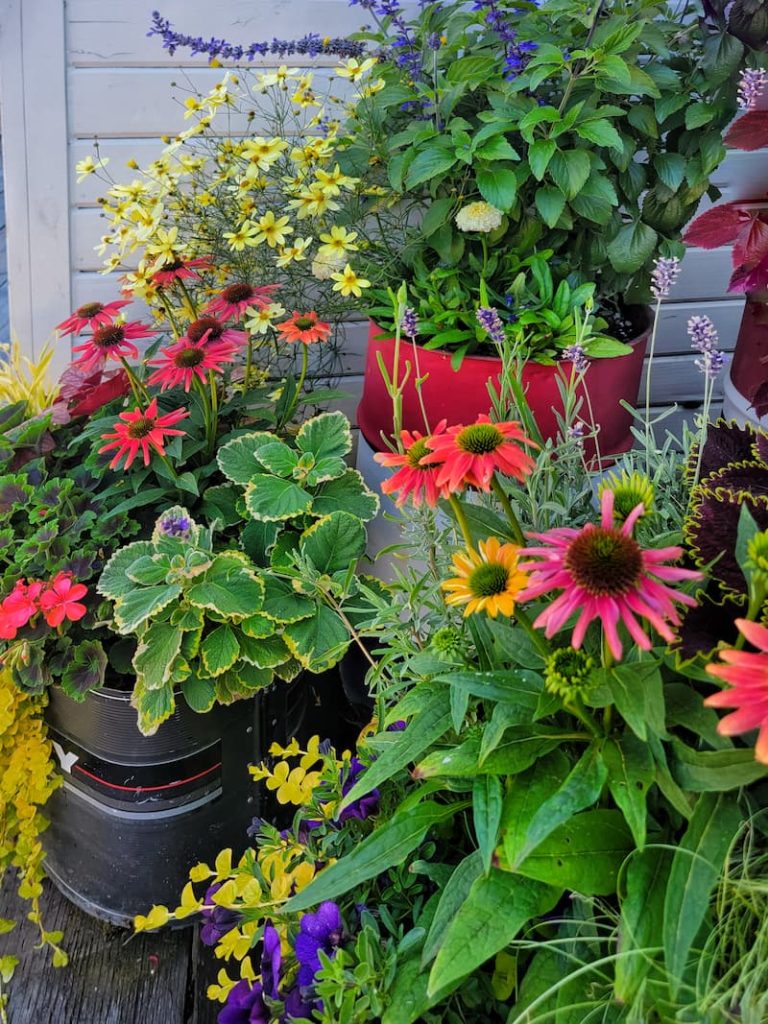
Container gardens are beautiful and versatile, but they do dry out faster than other types of garden beds, especially in warm, sunny spots. Because the soil volume is smaller, water tends to evaporate more quickly, and the roots can’t reach beyond the pot to search for moisture.
To keep your container plants hydrated and happy, make sure your pots have good drainage holes. This prevents water from pooling at the bottom and causing root rot. When you water, go slow and steady until you see water draining out the bottom—this ensures the entire root ball gets a good soak.
Self-watering containers can be a real game-changer. They provide a steady supply of moisture and cut down on how often you need to water, especially during the heat of summer.
Want to stretch your watering even further? Try grouping containers together to create a little microclimate that helps hold in humidity. Use a high-quality potting mix that retains moisture well, and consider placing your containers where they’ll get morning sun and afternoon shade to reduce evaporation.
With just a little extra care, your container plants will thrive, even on the hottest days.
Garden Supplies and Tools
Check out my favorite garden supplies and tools for the growing season. Whether you’re looking for potting soil or deer repellent, you’ll find what I use in my own garden.
Invest in Water-Saving Equipment to Efficiently Water a Garden
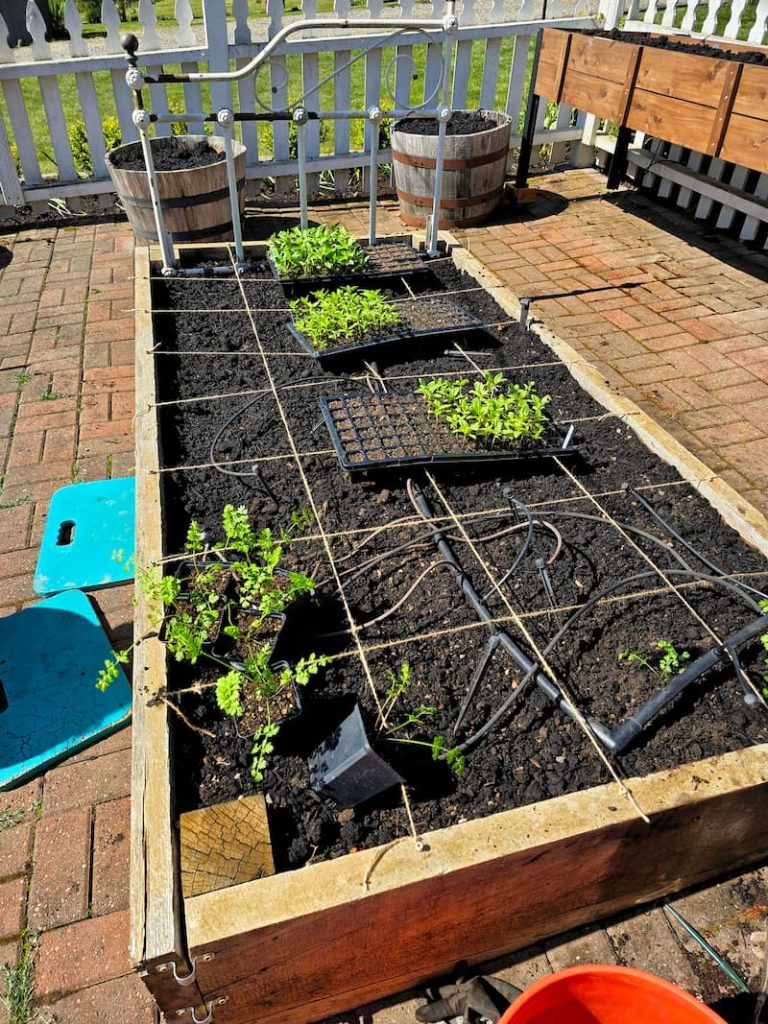
If you want to make watering your garden easier and more efficient, investing in a few water-saving tools is a great place to start. These resources not only help conserve water but also make sure your plants get consistent moisture right where they need it most, leading to stronger roots and healthier growth overall.
Here are some of the best tools to consider for a more efficient garden:
Soaker Hose
A soaker hose is one of the easiest upgrades you can make to your watering routine. This porous hose gently releases water along its length, allowing moisture to seep directly into the soil at the base of your plants.
Because it waters low and slow, there’s less evaporation and hardly any runoff, making it much more efficient than a sprinkler system. Soaker hoses are perfect for garden beds, veggie rows, or winding them through flower borders.
They’re also super simple to set up and adjust. Just snake them around your plants, connect to your hose or timer, and you’re good to go.
SHOP SOAKER HOSES
Drip Irrigation System
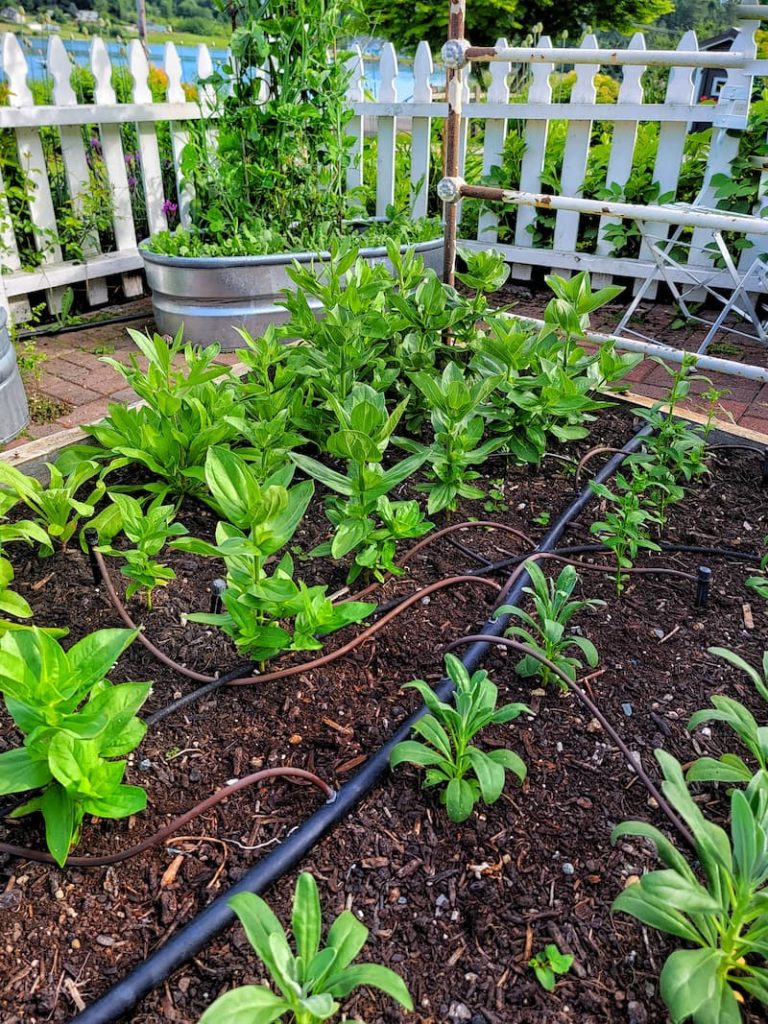
Drip irrigation is one of the most efficient ways to water your garden. It delivers water slowly and directly to the base of each plant, right where it’s needed, helping to reduce evaporation and water waste.
What’s great about drip systems is how customizable they are. You can adjust the flow rate and move the emitters around to fit different plant types, making it perfect for vegetable gardens, mixed flower beds, or any area with a variety of plants.
Yes, the setup can take a little time and planning (and may cost a bit more upfront), but the long-term payoff is worth it. You’ll save water, improve plant health, and cut down on the time you spend dragging hoses around.
SHOP DRIP IRRIGATION
Watering Timer
A watering timer is a game-changer when it comes to watering efficiently, especially if you’re busy or prone to forgetting (we’ve all been there).
Timers let you automate your watering schedule, making sure your garden gets the right amount of water at the best times of day, usually early morning or evening, when evaporation is lowest. This helps prevent both overwatering and underwatering, and it keeps your plants growing consistently.
You can hook timers up to soaker hoses, drip systems, or even traditional sprinklers, giving you a set-it-and-forget-it option that saves water and makes garden care so much easier.
SHOP WATER TIMERS
Moisture Meter
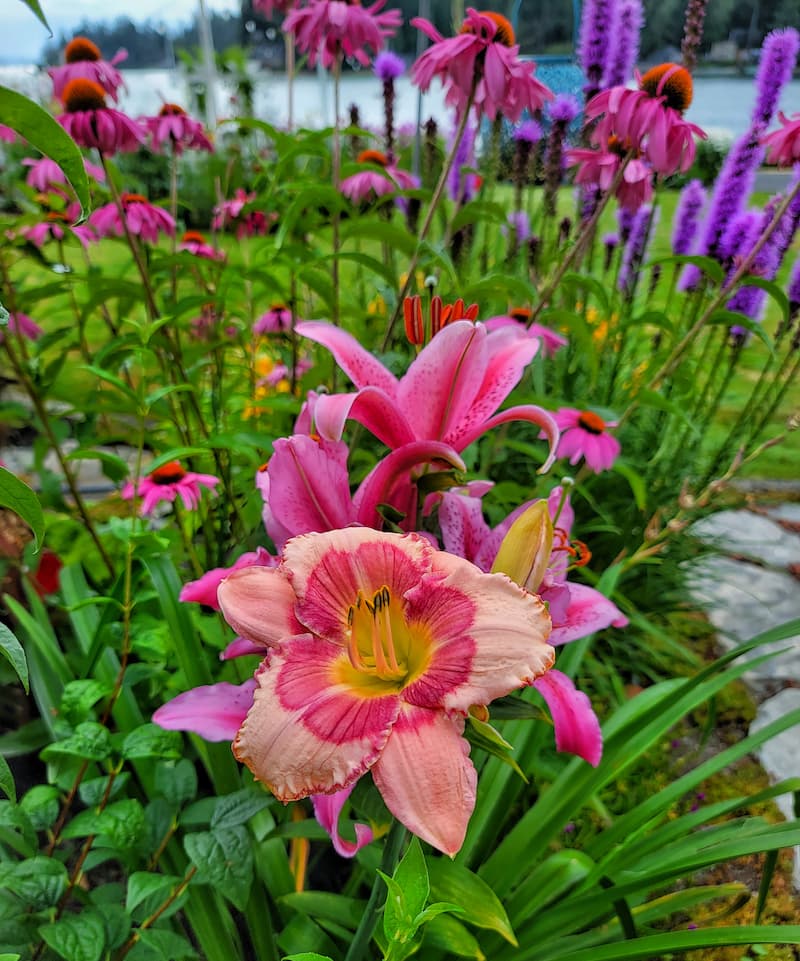
If you’ve ever wondered “Should I water today?”, a moisture meter can give you a clear answer. This simple tool takes the guesswork out of watering by showing you how damp the soil really is at the root level—where it matters most.
Just insert the probe into the soil and check the reading. It’s a quick way to know whether your plants need a drink or if they’re good to go. Moisture meters are especially helpful if you’re growing a mix of plants with different water needs.
By watering based on actual soil conditions, not just a routine, you’ll keep your plants healthier and avoid wasting water. It’s a small tool that can make a big difference in how you care for your garden.
SHOP MOISTURE METER
Smart Irrigation Controllers
If you love a little garden tech, smart irrigation controllers might be your new best friend. These handy devices take automated watering a step further by using real-time weather data to adjust your watering schedule.
When it rains, the system can pause. When things heat up or dry out, it can increase watering. It’s all based on your local weather, so your garden gets just the right amount of moisture—without you needing to lift a finger.
Smart controllers help save water and take the pressure off you to remember or adjust your watering schedule. It’s a great option if you want a low-maintenance, high-efficiency setup that keeps your garden looking its best year-round.
SHOP SMART IRRIGATION CONTROLLERS
Hose Nozzles with Adjustable Settings
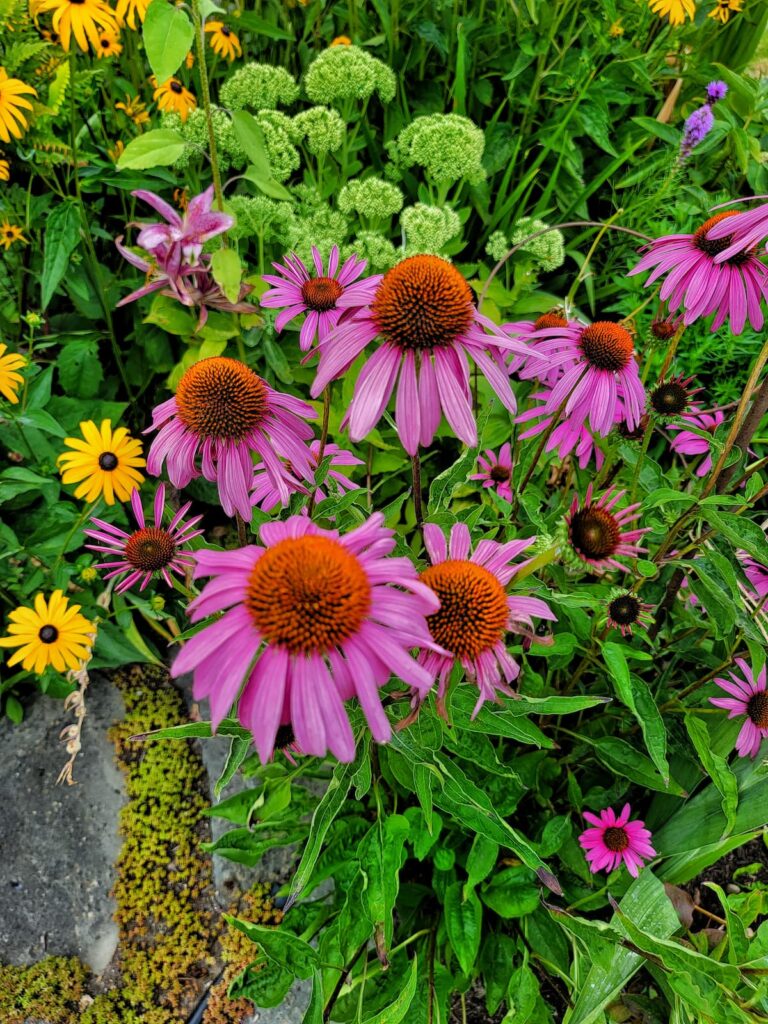
Sometimes it’s the small upgrades that make a big difference. A hose nozzle with adjustable settings gives you control over the water flow and pressure, which means you can easily switch between a gentle mist for delicate seedlings and a stronger spray for larger plants or cleaning up tools.
Using the right setting helps prevent overwatering, saves water, and lets you target exactly where the water goes. It’s a simple way to make your watering routine more efficient and plant-friendly.
SHOP HOSE NOZZLES WITH ADJUSTABLE SETTINGS
Rain Gauges
A rain gauge might seem old-school, but it’s incredibly useful. This basic tool measures how much rain your garden actually receives, so you’re not guessing whether you need to water after a storm.
By keeping track of rainfall, you can adjust your watering schedule and avoid giving your plants more water than they need. It’s an easy, affordable way to stay in tune with your garden’s natural hydration.
SHOP RAIN GAUGE
Plant Watering Spikes
Watering spikes are a handy solution for keeping container plants consistently hydrated, especially if you’re heading out of town or just don’t want to water every day.
These spikes, often made from ceramic or plastic, are inserted into the soil and connected to a small water reservoir (like an upturned bottle). They release water slowly and directly to the roots, helping to maintain even moisture without the risk of overwatering.
They’re especially great for potted plants or young seedlings that tend to dry out quickly.
More Ways to Practice Water-Efficient Gardening

Looking for even more ways to stretch your watering efforts and care for your garden sustainably? Here’s one of my favorite eco-friendly additions:
Rain Barrels for Collecting Water
Rain barrels are a smart and sustainable way to make the most of what nature gives us. By placing a barrel under a downspout, you can collect rainwater runoff from your roof and store it for watering your garden later on.
Not only does this cut down on your use of municipal water, but it also gives your plants chemical-free, untreated water, which they love. It’s a great way to reduce your water bill and make your garden a little more environmentally friendly in the process.
Once you start using rainwater in your garden, it’s hard to imagine going without it!
SHOP RAIN BARREL
Mulch to Retain Moisture
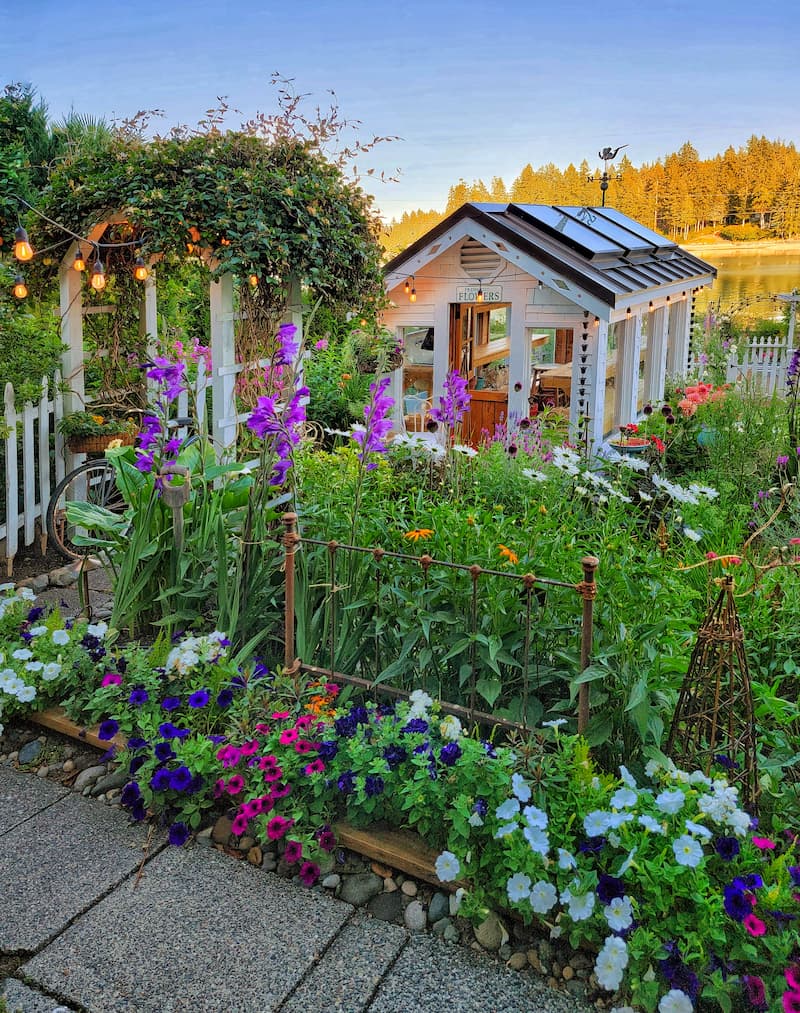
If there’s one simple garden habit that makes a big impact, it’s mulching. Adding a layer of mulch around your plants helps lock in soil moisture, reduce evaporation, and even keep weeds at bay, so your plants don’t have to compete for water.
Organic mulches like straw, shredded leaves, wood chips, or compost do double duty: they conserve moisture and improve your soil as they break down. It’s a win-win for your garden and a key step in creating a more water-efficient space.
Prevent Runoff
Water runoff doesn’t just waste water—it can also lead to soil erosion and uneven moisture levels in your garden. The key to preventing it? Water slowly and deeply, giving the soil time to soak it all in.
Tools like drip irrigation systems or soaker hoses are especially helpful here. They deliver water right to the base of your plants at a gentle pace, reducing surface flow and helping moisture stay where it’s needed most—at the root zone.
How Can You Tell How Much You’ve Watered Your Garden?
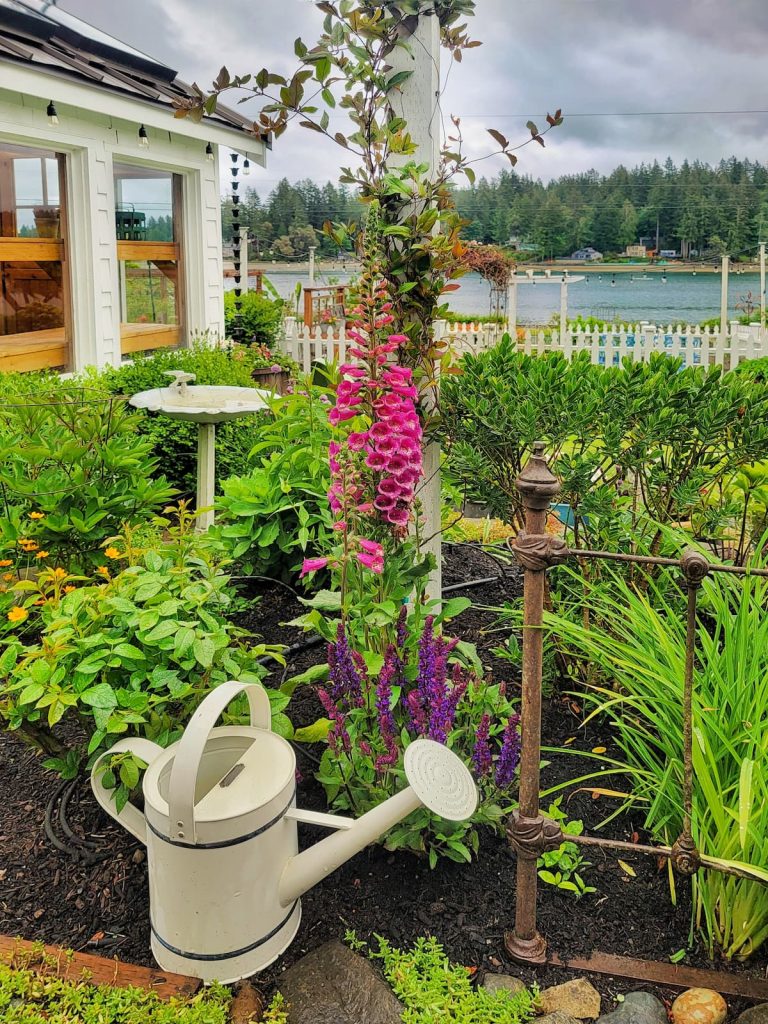
It’s one thing to water your garden, but how do you know if it’s enough? Thankfully, there are a few simple ways to track how much moisture your plants are actually getting.
Use a Rain Gauge or Water Gauge
Place a rain gauge or water gauge in your garden bed or container to measure how much water your plants are receiving from both rainfall and irrigation. This helps you adjust your watering schedule based on what’s already been added naturally.
Try the “Can Test”
The classic can test is an easy, low-tech trick. Just place a few empty cans or jars around your garden while you water. Then, measure the water collected in each one. Aim for 1 to 2 inches per week, including rainfall—that’s usually the sweet spot for most gardens.
Use a Soil Moisture Meter
A soil moisture meter is another handy tool to help you see how deep your watering is reaching. For most plants, you’ll want the soil to be moist down to 6 inches or so. If it’s only damp at the top, your plants may not be getting what they need.
Dig and Check the Soil
You can also do a quick soil check by digging a small hole a few hours after watering. If the top couple of inches are dry but the soil is moist below, you’re likely in good shape.
Watch Your Plants
Lastly, let your plants be your guide. Healthy, vibrant growth usually means they’re getting the right amount of water. If they’re wilting, turning yellow, or the soil feels bone-dry, it’s time to adjust your watering routine.
When is the Best Time of Day to Water Your Garden?
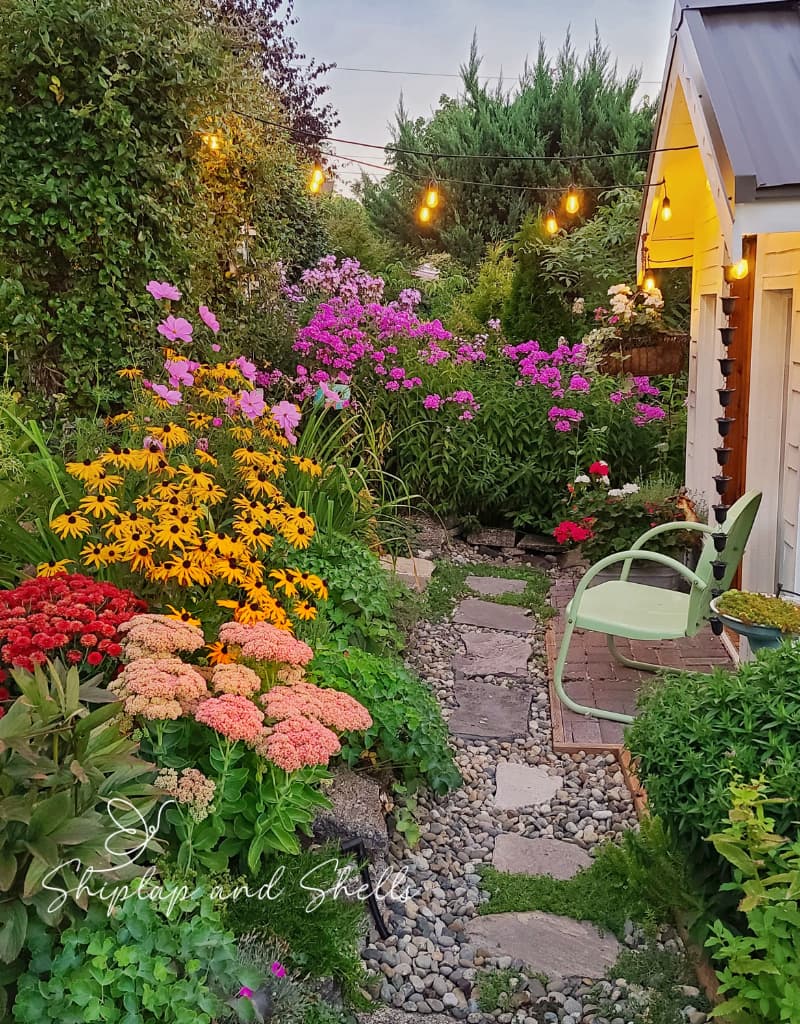
Early morning is hands-down the best time to water your garden—ideally between 6 a.m. and 10 a.m. During these cooler hours, the water has a chance to soak deep into the soil before the heat of the day kicks in and causes it to evaporate.
Morning watering helps your plants stay hydrated through the hottest part of the day and gives the foliage plenty of time to dry out before nightfall, which can help prevent fungal issues that thrive in damp, dark conditions.
If mornings aren’t an option, the next best time is late afternoon to early evening, around 4 p.m. to 6 p.m. It’s not quite as ideal as morning watering (because of a bit more evaporation), but it still gives your garden a chance to drink up and lets the leaves dry a bit before it gets dark.
Try to avoid watering during the heat of the day, when the sun is strongest. Not only does a lot of the water evaporate before it can reach the roots, but it’s also not the most efficient use of your time or resources.
How Many Minutes Should You Water a Garden?

How long you should water your garden really depends on a few key factors, like your soil type, plant varieties, weather, and watering method. However, there are some helpful guidelines to get you started, especially if you’re aiming for 1 to 2 inches of water per week, including rainfall.
Here’s a breakdown to help you figure out the right watering time for your setup:
Sprinklers
Most sprinklers deliver about ½ inch of water in 30 minutes. So, if you’re trying to reach 1 inch of water, you’ll need to run your sprinkler for roughly an hour.
Want a more accurate read? Place a few empty cans or containers around your garden and measure the amount of water that collects during your session. Then adjust the timing as needed.
Soaker Hoses
Soaker hoses release water slowly and directly into the soil, perfect for conserving water and keeping roots happy. In general, running a soaker hose for about 30 minutes, twice a week, works well for most garden beds.
But every garden is different, so check your soil moisture and adjust as needed. If the top few inches are dry but it’s moist below, you’re in the sweet spot.
Drip Irrigation Systems
Drip irrigation is precise and efficient. For most gardens, 30 to 45 minutes, twice a week, is usually enough. But again, it depends on how your system is set up and your plants’ needs.
Use a soil moisture meter or dig down a few inches after watering to make sure the moisture is reaching the roots.
Hand Watering
When watering by hand, aim to soak each plant thoroughly. For smaller plants, that usually means 15–20 seconds per plant, and longer for larger plants or shrubs. The goal is to get the water to about 6 inches deep in the soil.
Check the soil afterward to see if it’s moist where it matters, and don’t be afraid to adjust as the season warms up or cools down.
Should I Water My Garden Every Day?
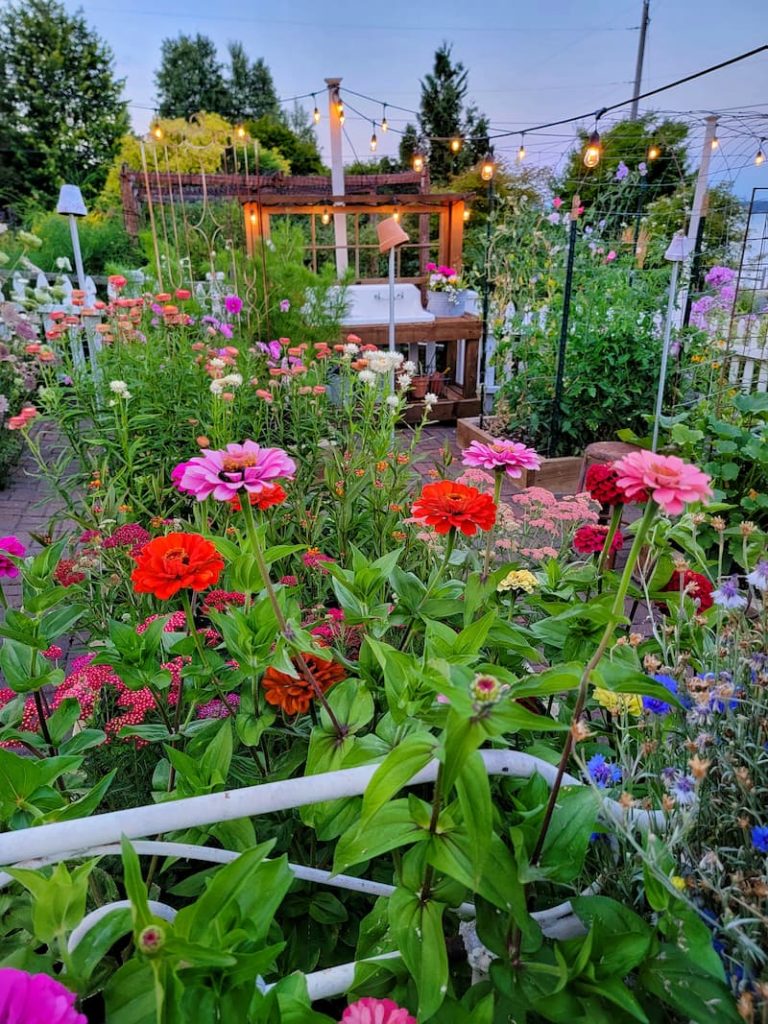
It might seem like a good idea to water your garden every day, especially during hot weather, but for most plants, daily watering isn’t necessary (and can actually do more harm than good).
Frequent, shallow watering encourages plants to develop shallow roots, which makes them more vulnerable to heat and drought. Instead, aim for deep, less frequent watering to help roots grow down into the soil where they can access moisture longer.
Most gardens do best with deep watering two to three times a week, depending on your soil, plant types, and the weather. Here are a few things to keep in mind:
Soil Type
Plant Type
Weather Conditions
Hot, dry, or windy weather speeds up evaporation, so your garden may need more frequent watering. On the other hand, cooler or humid days mean you can often water less.
Mulch Helps
Adding a layer of mulch around your plants helps lock in moisture and reduce the need for frequent watering. It also protects roots from extreme temperature swings.
Root Depth Matters
When you water deeply, it encourages roots to grow down where the soil stays moist longer. That means your plants can go longer between waterings and will be more resilient during dry spells.
Final Thoughts on Watering Your Garden Efficiently
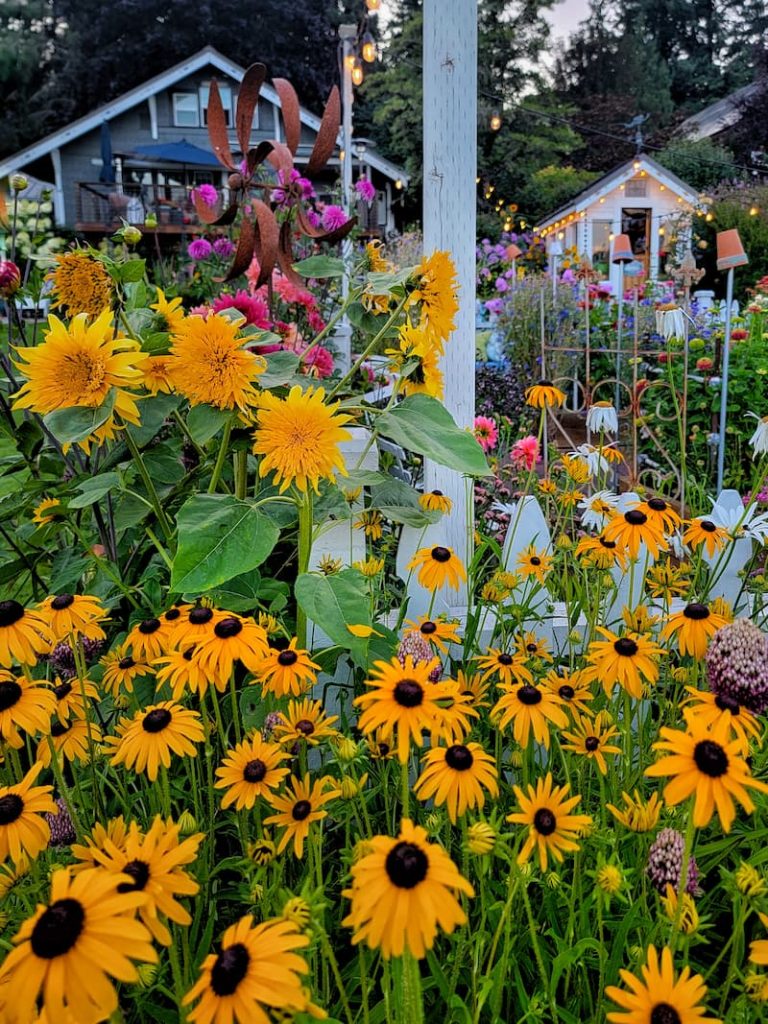
Watering your garden isn’t just about keeping things green, it’s about creating a healthy, thriving space where your plants can truly flourish. With a little planning, the right tools, and a few smart habits, you can make the most of every drop while saving time, energy, and water along the way.
Whether you’re using soaker hoses, checking the forecast, or simply getting in tune with your garden’s needs, every step you take toward water-efficient gardening makes a difference for your plants and the planet.
Don’t worry about being perfect—gardening is a journey. Keep learning, keep observing, and adjust as you go. Your garden will thank you for it!
Do you have a favorite watering tip or tool? I’d love to hear about it in the comments below. And if you found this post helpful, feel free to share it with a fellow garden lover.
Until next time,
Happy Watering—and Happy Gardening!

I’m a self-taught hobby gardener. Everything I share on my blog is my opinion and what has worked for me.
MORE POSTS
For You To Enjoy
Follow Me for More Inspiration
Shop my Amazon Storefront, LTK sources, and my favorite home decor, garden, and lifestyle products. When you purchase from one of my links, I earn a small commission, which helps me continue sharing all the content you expect on my blog.
Be sure to follow me on Pinterest, Instagram, Facebook, TikTok and LIKEtoKNOW.it. Do you like gardening? Join my Facebook Gardening Tips & Tricks group.

